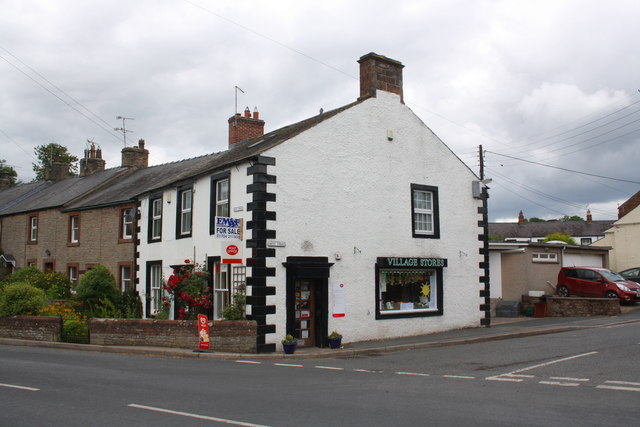Topics > Civil Parishes in Cumbria > Kirkby Thore Civil Parish > Kirkby Thore Parish, 1848
Kirkby Thore Parish, 1848
KIRKBY THURE or THORE (St. Michael), a parish, in East ward and union, county of Westmorland; containing, with the chapelries of Milbourne and Temple-Sowerby, 1,171 inhabitants, of whom 442 are in the township of Kirkby-Thure, 5¼ miles (N.W. by N.) from Appleby. This place received its adjunct designation from Thor, the chief of the Saxon idols, to whose honour a temple was raised here. In 1684, an ancient well, some urns, and other earthen vessels, were discovered in the parish; and on turning up the site of an ancient fortress called Whelp Castle for cultivation, in 1687, a quadruple wall, some arched vaults, leaden pipes, and an altar inscribed Fortunæ Servatrici, were discovered, the supposed remains of the Roman station Brovonacœ, fixed by Horsley at this place. In 1770, the horns of a moose deer were dug up near the confluence of the rivers; and in removing the foundations of the old bridge, in 1838, a great number of additional Roman relics were found. An old house in the parish, called the Spital, is said to have belonged to the Knights of St. John of Jerusalem. The parish comprises by measurement 2,425 acres; two-thirds are arable, and with the exception of about 50 acres of wood, the remainder is pasture. The soil near the river is a sandy loam, and on the higher lands gravel, alternated with clay; the surface is pleasingly undulated, and the lower grounds are intersected by the rivers Eden and Troutbeck, which unite at the village. The village, which is of considerable extent, was partly built with the ruins of Whelp Castle, which occupied an adjacent eminence. In 1838, a bridge was erected across the Troutbeck, at a cost of £1,000: along this, passes the road from Appleby to Penrith. The living is a rectory, valued in the king's books at £37. 17. 11.; net income, £750; patron, the Earl of Thanet: the tithes were commuted for land in 1812. The church is an ancient structure. There are chapels at Temple-Sowerby and Milbourne; also a place of worship for Wesleyans, and a school with a trifling endowment. Near the village is a sulphureous spring, called Pots Well, which rises from an alabaster rock, considerably below the surface of the ground.
Extract from: A Topographical Dictionary of England comprising the several counties, cities, boroughs, corporate and market towns, parishes, and townships..... 7th Edition, by Samuel Lewis, London, 1848.

Co-Curate Page
Kirkby Thore
- Overview About Kirkby Thore Map Street View Kirkby Thore is a small village and civil parish in Cumbria, England , in the historic county of Westmorland. It is close …

Co-Curate Page
Temple Sowerby, 1848
- SOWERBY, TEMPLE, a chapelry, in the parish of Kirkby-Thore, East ward and union, county of Westmorland, 7 miles (N.W.) from Appleby; containing 381 inhabitants. The village is situated on the …

Co-Curate Page
Milburn, Westmorland, 1848
- MILBURN, a chapelry, in the parish of KirkbyThore, East ward and union, county of Westmorland, 6 miles (N. by W.) from Appleby; containing 348 inhabitants, of whom 33 are in …


Co-Curate Page
Kirkby Thore
- Overview About Kirkby Thore Map Street View Kirkby Thore is a small village and civil parish in Cumbria, England , in the historic county of Westmorland. It is close …

Co-Curate Page
Temple Sowerby, 1848
- SOWERBY, TEMPLE, a chapelry, in the parish of Kirkby-Thore, East ward and union, county of Westmorland, 7 miles (N.W.) from Appleby; containing 381 inhabitants. The village is situated on the …







